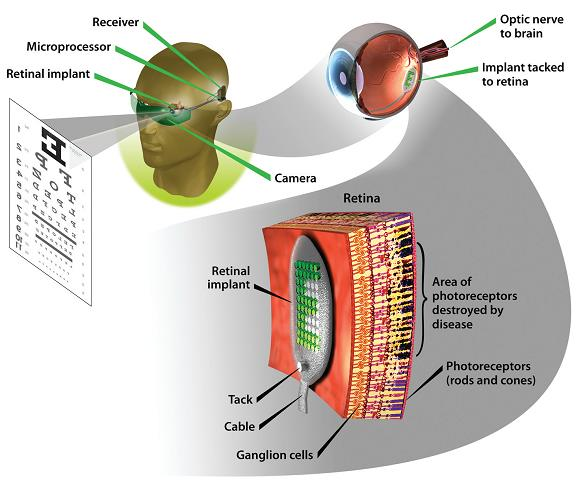Retinal processing
Retina is derived from the neural tube and is a part of central nervous system. It consists of two sections, the retinal pigment epithelium, that splits the middle, choroid coat of the eyeball from the other innermost component and the neural retina – the dark pigments in the retinal pigment epithelium and choroid coat function to absorb the light passing through receptor layer, therefore decreasing light scatter and image distortion in the eye. The neural retina consists of five types of neurons: the visual receptor cells (i.e., the rods and cones), bipolar cells, the horizontal cells, an amacrine cells, and the retinal ganglion cells.
Retinal Layers:
The retina is a coated structure consisting of alternating layers of cell processes and cell bodies. The innermost layers are situated nearest the vitreous chamber, while the outermost layers are situated adjacent to the retinal pigment epithelium and choroid. The most significant layers, progressing from the outer to inner layers, are: the retinal pigment epithelium, the receptor layer, an outer nuclear layer, an outer plexiform layer, an inner nuclear layer, an inner plexiform layer, the retinal ganglion and an optic nerve layer.

Processing:
The photoreceptors display a fairly high basal release of glutamate. Whenever light strikes the photoreceptor cell, it begins a biochemical procedure in the cell which decreases the release of glutamate from its axon terminal. The glutamate, in return, affects the activity of the bipolar and horizontal cells that synapse with the photoreceptor. The bipolar cells, in return, synapse with amacrine and retinal ganglion cells. This is the axons of the retinal ganglion cells which exit the eye as the optic nerve and terminate in the brain. Note that the direct pathway for the transmission of visual information from the eye to the brain involves only the bipolar cell, receptor cell, and ganglion cell. The horizontal cells alter the synaptic activity of receptor cells and, thus, indirectly affect the transmission of visual information by bipolar cells. Likewise the amacrine cells modulate the synaptic activity of the retinal bipolar and ganglion cells, thus affecting the transmission of visual information by the ganglion cells